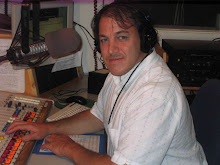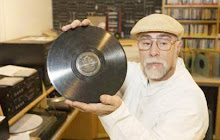MEXICO CITY POSTCARD:
40 YEARS AFTER, TLATELOLCO 2008
By Daniel del Solar
October 14, 2008
DAY ONE
I flew in to Mexico City, arriving at the airport in the early morning
of October 2, 2008, FORTY YEARS after the mass killings orchestrated
by the President of Mexico, Gustavo Diaz Ordaz and using troops and
provocative snipers, also in the employ of either Mexico or the United
States.
Some soldiers who actually carried out the killings of defenseless
men, women and children where in turn also wounded and killed by
"unknown and unseen" snipers.
The place, La Plaza Tlatelolco, is about two miles north of the main
plaza of Mexico City, and other downtown landmarks like the Torre
Latinoamericano, tallest building there, and the Bellas Artes.
Forty years ago, according to the excellent WIKIPEDIA.com summary,
"The demonstrations grew in size, until, on 2 October, after student
strikes lasting nine weeks, 15,000 students from various universities
marched through the streets of Mexico City, carrying red carnations to
protest the army's occupation of the university campus. By nightfall,
5,000 students and workers, many of them with spouses and children,
had congregated outside an apartment complex in the Plaza de las Tres
Culturas in Tlatelolco for what was supposed to be a peaceful rally.
Among their chants were ¡No queremos olimpiadas, queremos revolución!
("We don't want Olympic games, we want revolution!"). Rally organizers
did not attempt to call off the protest when they noticed an increased
military presence in the area."
"The massacre began at sunset when police and military forces—equipped
with armored cars and tanks—surrounded the square and began firing
live rounds into the crowd, hitting not only the protestors but also
innocent bystanders. Demonstrators and passersby alike, including
children, were hit by bullets and mounds of bodies soon lay on the
ground. The killing continued throughout the night, with soldiers
operating on a house-to-house basis in the apartment buildings
adjacent to the square. Witnesses to the event claim that the bodies
were later removed in garbage trucks."
Tlatelolco is in one of the poorest areas of Mexico City now and was
then also. But there was a new housing development in 1968, located
next to a colonial church and pre-Colombian, ancient Indian buildings
on sides of the large plaza. The plaza was where the killings took
place in the Plaza of the Three Cultures, La plaza de las tres
culturas, suddenly and without cause as the demonstration had an
official police permit.
I traveled To this plaza as a journey of remembrance and solidarity. I
wanted to be with Mexico as we mourned and celebrated the spirit of
hope that still fills many. I arrived in the early afternoon amidst
large groups of people also participating in the demonstration on
behalf of "freedom and justice and no police killings."
As the sun fell, at the time the killings began at 6:10 in the
evening, a circle began to form on the south side of the square where
most of the killings took place. I spoke with several people who had
actually been there 40 years ago. They could tell the story as
eye-witnesses and I hope to share these materials on-line.(place
The square was by this time littered strangely with single shoes, as
if lost in the panic 40 years ago, as people attempted to flee, they
lost a shoe, and their bodies have disappeared, but the evidence of
the massacre returns each year as an art piece, and installation of
single shoes throughout the Plaza, as it always will long as the
people have still have a memory. Also, the artists amongst the crowd
also drew the outlines of fallen bodies on the ground as in a crime
scene.
Many lost their lives that night, 40 years ago, and more. Mexico lost
the opportunity to progress incorporating the dreams and energy of its
students, young people…all stopped dead in its tracks with death being
dealt everywhere and there was nowhere to run to and the gates had
been locked and the snipers killed and the army killed and people and
bodies were removed on that first October 2, 1968. Disappeared.
The occasion of 40 years since the Tlatelolco massacre did find
extensive journalistic reflection in many media, newspaper columns, TV
interview shows, TV specials which played recently completed movies
about the events, radio shows, and in the Mexican Congress. Though 40
years have passed, most of the issues remain alive and of deep concern
and interest to all.
But now, here, as I stand in the circle of recollection on October 2,
2008, it is also, as we hear about the past, again from someone who
survived, I note also the feelings of hope, the sounds of hope echo
across the large plaza. Words, ideas, plans, the future. And I hear
also, "Tlatelolco, ni perdon, ni olvido. (Tlatelolco, neither
forgiveness yet, nor forgotten.)
DAY TWO
The day following, on October 3, 2008, most of the Mexico City Daily
newspapers published front page photographs of a few young
provocateurs, using the march as a cover, destroying small businesses
and stealing. A similar shallow report was typical on all of the local
TV news shows. None of the daily newspapers carried any notice of the
main issues raised by the lack of justice in the Tlatelolco event.
That 40,000 persons marched honoring the Tlatelolco dead and seeking
the truth about Tlatelolco remains a big, un-resolved question
regarding the legitimacy of the current Mexican government.
AT THE SAME TIME, Mexico is at war. Each day, the death toll involved
in the drug war ranges around 20. Entire police deparments in small
towns receive death threats, and are asked to resign "en masse" and
they do. Otherwise, the top anti-drug cops also are gunned down,
turned over to the drug lords through princely payments and other
benefits.
There are now narco-corridos, songs about the drug lords, often
commissioned by the drug-lords themselves. The upcoming National
election will take place with a significant lack of security for
voters, and for the society as a whole. The war, the drug war and "who
knows what else war" continues.
The major "privatization" effort of the current Mexican government,
paid for and appointed by the US economic interests that manage United
States Government foreign policy, is oil. OIL! Surprise.
This will mean that the Mexican people, the citizens, will not be able
to benefit from the oil they own. Instead, they, the government, will
sell the rights to make profits on oil to private interests, at a
pittance.
DAY THREE
In Xochimilco, at the southern end of Mexico City, the Museo Dolores
Olmedo, is a lovely locale to view paintings by Frida Kahlo. When I
went there, in perfect weather, I saw many wonderful sculptures,
paintings and drawings by Diego Rivera, peacocks in the garden, but
most of the collection of paintings owned by the Museum were not on
view, having just returned that day from the San Francisco Museum of
Art. The paintings will shortly be on exhibit in Santiago, Chile. No
time to show them here in Mexico City.
This is Daniel del Solar, reporting for La Raza Chronicles.
#30
--
danieldelsolar@gmail.com
If you like peace, work for justice
===
More info on La Raza Chronicles:
http://www.kpfa.org/archives/index.php?show=16
9 years ago







